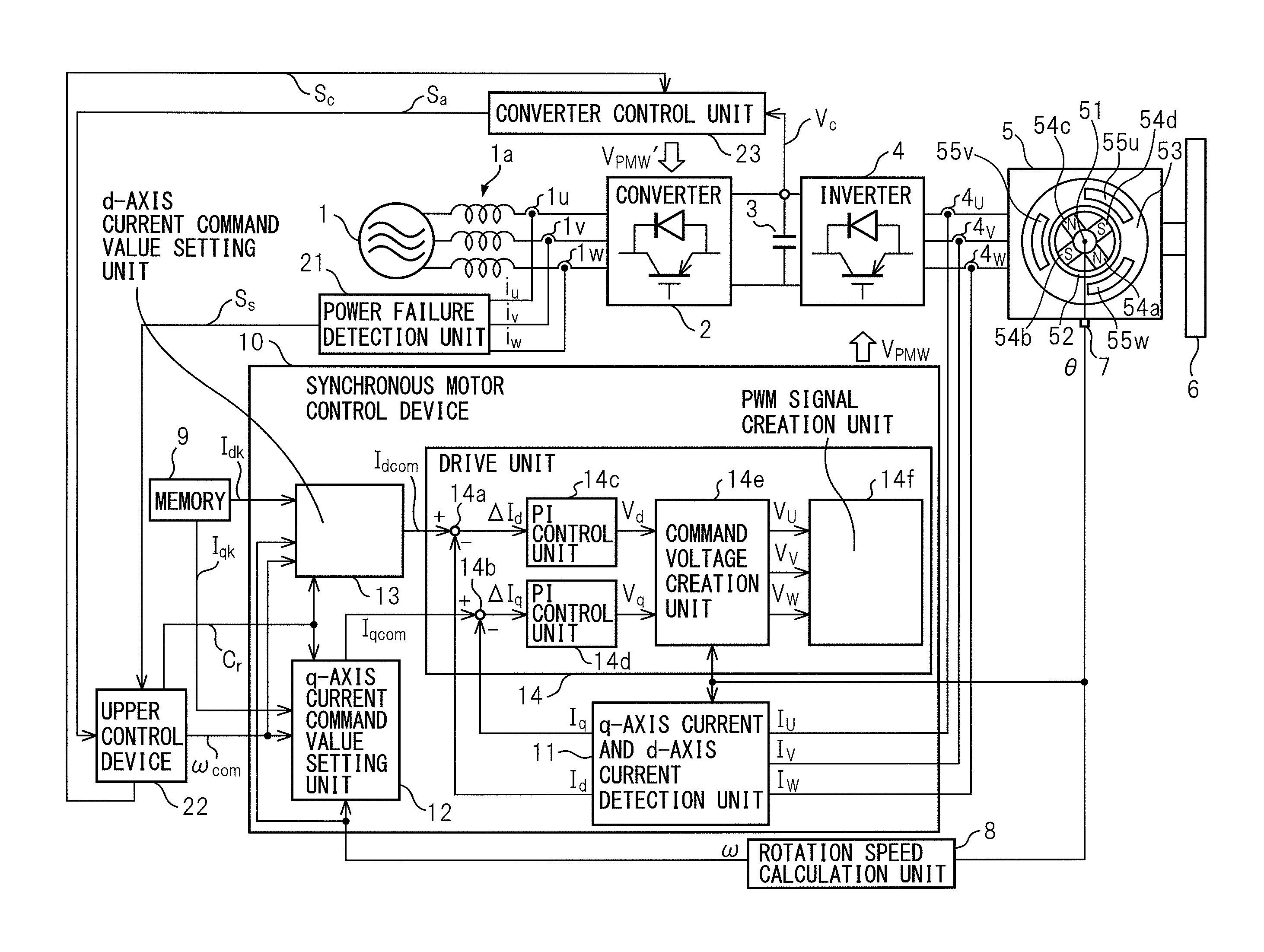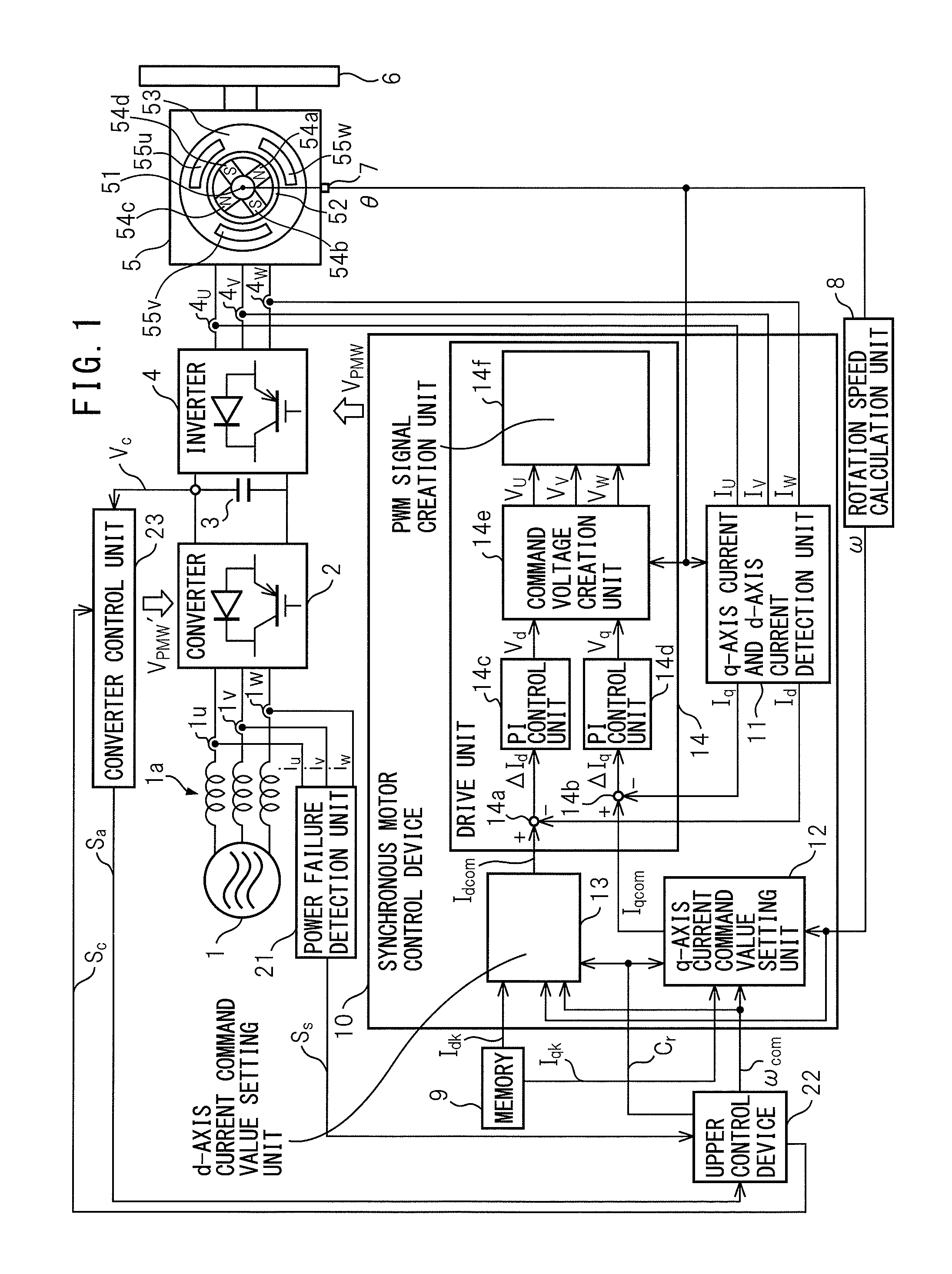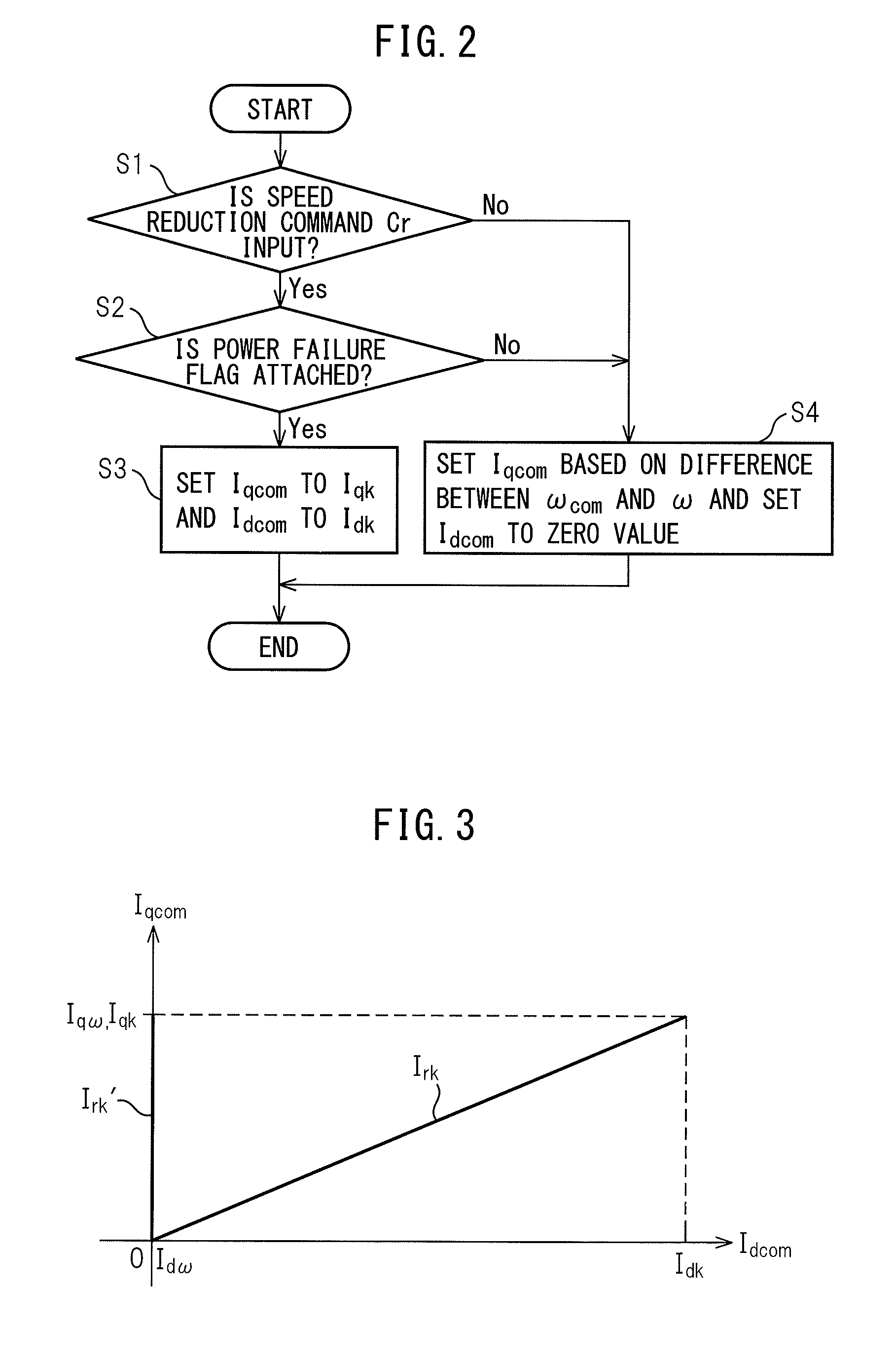Synchronous motor control device for controlling synchronous motor to carry out power regenerative operation and stop synchronous motor at the time of power failure
a technology of synchronous motor and control device, which is applied in the direction of motor/generator/converter stopper, dynamo-electric converter control, dynamo-electric gear control, etc., can solve the problems of regenerative energy increase, over-voltage alarm, and over-voltage alarm, so as to avoid over-voltage, stop the synchronous motor both quickly and safely, and avoid the effect of over-voltag
- Summary
- Abstract
- Description
- Claims
- Application Information
AI Technical Summary
Benefits of technology
Problems solved by technology
Method used
Image
Examples
Embodiment Construction
[0020]Embodiments of the synchronous motor control device according to the present invention are explained with reference to the drawings.
[0021]Referring to the drawings, FIG. 1 is a block diagram of a system having a synchronous motor control device of an embodiment of the present invention. The system shown in FIG. 1 has a three-phase alternating-current power source 1 as an alternating-current power source, a converter 2, a smoothing capacitor 3 as a DC link part, an inverter 4, a permanent magnet synchronous motor 5 as a synchronous motor, a driven object 6, a position detection unit 7, a rotation speed calculation unit 8, a memory 9, a synchronous motor control device 10, a power failure detection unit 21, an upper control device 22 and a converter control unit 23.
[0022]The converter 2 consists of a plurality (six, in the case of three-phase alternating current) of rectifier diodes and transistors connected in inverse parallel to the rectifier diodes, respectively, for example,...
PUM
 Login to View More
Login to View More Abstract
Description
Claims
Application Information
 Login to View More
Login to View More - R&D
- Intellectual Property
- Life Sciences
- Materials
- Tech Scout
- Unparalleled Data Quality
- Higher Quality Content
- 60% Fewer Hallucinations
Browse by: Latest US Patents, China's latest patents, Technical Efficacy Thesaurus, Application Domain, Technology Topic, Popular Technical Reports.
© 2025 PatSnap. All rights reserved.Legal|Privacy policy|Modern Slavery Act Transparency Statement|Sitemap|About US| Contact US: help@patsnap.com



